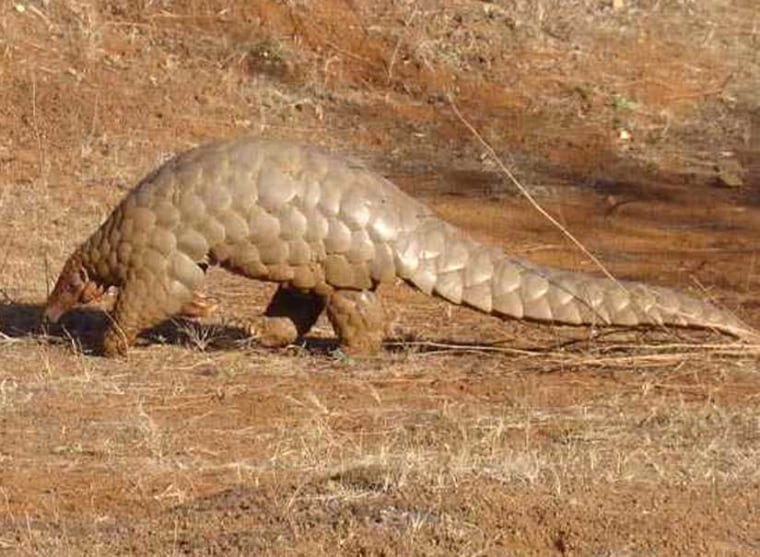Many of the mammals that emerged right after the non-avian dinosaur extinction were hearty creatures, as exemplified by Ernanodon, a beast described in the latest issue of the Journal of Vertebrate Paleontology.
The skeleton that is the focus of the study is nearly complete, revealing how this early mammal looked in the flesh and lived.
"Ernanodon was a badger-sized, rather chunky mammal with a short square skull, extremely reduced dentition and big claws on the forelimbs," lead author Peter Kondrashov told Discovery News.
NEWS: Dinosaur Extinction Paved Way for Mammal Giants
"The structure of the forelimb indicates that this animal was doing a lot of digging, probably mostly in the search of food," added Kondrashov, who is an associate professor and chair of the Anatomy Department at the Kirksville College of Osteopathic Medicine.
He and colleague Alexandre Agadjanian analyzed the skeleton, which dates to the Late Paleocene (60 to 55 million years ago). This Ernanodon individual lived in Mongolia. Other, less complete, remains were previously found in China.
"Ernanodon is a unique find and represents one of the most complete skeletons ever collected from the Paleocene of the Naran Bulak locality," said Agadjanian, who works at the Borissiak Paleontological Institute of the Russian Academy of Sciences.
The animal's hind limbs were almost flat-footed, so the researchers don't think Ernanodon was much of a runner. It instead appears to have spent most of its days digging and eating, without much chomping.
NEWS: Why Dinosaurs Were So Huge
"Based on the structure of the teeth — very thin enamel layer, reduced tooth size — it appears that the food was rather soft and did not require a lot of chewing," Kondrashov explained. "Similar dental structure is observed in mammals that feed on termites, ants and other social insects, so we think that it was specialized in feeding on social insects as well."
While Ernanodon is long gone and has no direct descendants, the scientists believe this animal was related to a group of extinct mammals known as palaeanodonts. They, too, had bulky bodies, tiny teeth and big claws for digging.
These animals are, in turn, related to modern mammals called pangolins, or scaly anteaters, which live in Africa and Asia.
Based on the earlier evidence for Ernanodon, scientists thought the then-enigmatic mammal was related to modern armadillos or sloths. While pangolins somewhat resemble these animals in appearance and behavior, they represent a different genus and species.
NEWS: Saber-Toothed Squirrel Lived Near Dinosaurs
Ernanodon is just one of many mammals that came to prominence after the great non-avian dinosaur extinction.
"This animal comes from the time period known as the Paleocene, which followed the Cretaceous, so it probably evolved as a result of appearance of numerous new niches after the dinosaurs went extinct," Kondrashov said.
"We know very little about Paleocene deposits in Asia," he added, "and this find sheds a lot of light on the early evolution of mammals in Asia."
